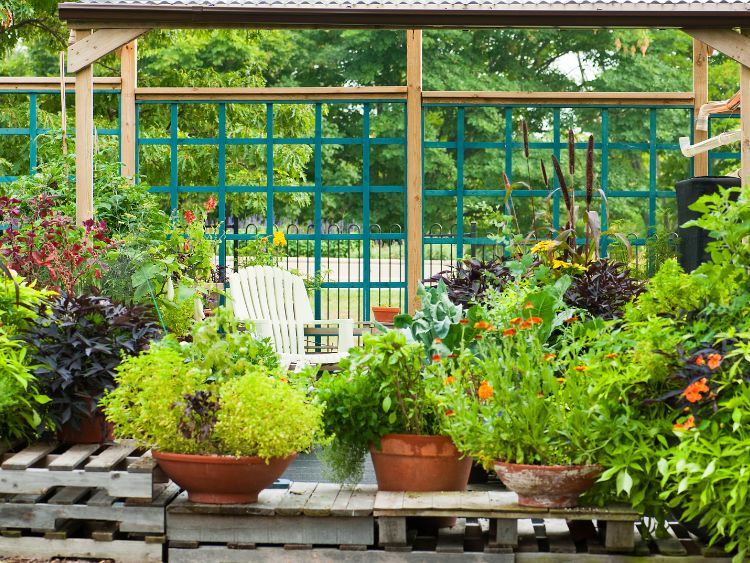In the hustle and bustle of city life, where concrete jungles dominate, a green revolution is quietly blooming. Urban gardens are transforming our cities into verdant landscapes, offering a breath of fresh air, literally and metaphorically. This article delves into the world of urban gardens, exploring their benefits, types, and how you can start your own slice of green heaven in the urban sprawl.
What Are Urban Gardens?
Urban gardens, as the name suggests, are gardens located within a city. These gardens can take many forms, from small container gardens on balconies to larger community gardens in vacant lots. The primary goal of urban gardening is to make use of available space to grow plants, including flowers, herbs, and vegetables, bringing nature back into urban settings.
Why Urban Gardens Matter
Urban gardens are more than just a trend; they are a crucial component of sustainable urban living. Here are some compelling reasons why urban gardens matter:
Environmental Benefits
- Air Quality Improvement: Plants absorb carbon dioxide and release oxygen, helping to clean the air in polluted urban areas.
- Urban Heat Island Mitigation: Gardens help cool cities by providing shade and releasing moisture into the air.
- Biodiversity Enhancement: Urban gardens create habitats for pollinators like bees and butterflies, supporting urban biodiversity.
Social and Economic Benefits
- Community Building: Community gardens bring people together, fostering a sense of community and cooperation.
- Food Security: Growing your own food can reduce grocery bills and provide fresh, organic produce.
- Mental Health: Gardening has been shown to reduce stress, anxiety, and depression, offering therapeutic benefits.
Types of Urban Gardens
Urban gardens come in various shapes and sizes, each with its own unique set of benefits. Let’s explore some popular types:
Container Gardens
Perfect for apartment dwellers, container gardens use pots and planters to grow plants. They are versatile and can be placed on balconies, rooftops, or windowsills.
Community Gardens
These are shared spaces where community members collectively garden. Community gardens can be found in vacant lots, parks, or even on rooftops.
Vertical Gardens
Vertical gardens, also known as living walls, maximize space by growing plants upward on structures. They are ideal for small spaces and can be quite striking visually.
Hydroponic Gardens
Hydroponic gardening involves growing plants in nutrient-rich water instead of soil. This method is highly efficient and can be set up indoors or outdoors.
Rooftop Gardens
Rooftop gardens utilize the often-unused space on top of buildings. They can range from simple container gardens to complex green roofs.
How to Start Your Urban Garden
Ready to dive into urban gardening? Here’s a step-by-step guide to get you started:
1. Assess Your Space
Determine how much space you have available. Whether it’s a balcony, rooftop, or a small patch of yard, understanding your space will help you choose the right type of garden.
2. Choose Your Plants
Select plants that suit your space and climate. For beginners, herbs like basil, mint, and parsley are easy to grow. If you have more space, consider vegetables like tomatoes, peppers, and lettuce.
3. Gather Supplies
You’ll need soil, containers or garden beds, seeds or seedlings, and gardening tools. If you’re opting for a vertical or hydroponic garden, you’ll need additional supplies like trellises or hydroponic systems.
4. Prepare the Soil
Good soil is key to a thriving garden. Use a high-quality potting mix for containers, and enrich garden beds with compost.
5. Plant Your Garden
Follow the planting instructions for each plant. Ensure they have enough space to grow, and plant at the right depth.
6. Water and Maintain
Water your garden regularly, but avoid overwatering. Keep an eye out for pests and diseases, and address them promptly.
7. Harvest and Enjoy
Once your plants start producing, harvest regularly to encourage more growth. Enjoy the fruits (and vegetables) of your labor!
FAQs About Urban Gardens
What plants are best for urban gardens?
Herbs, leafy greens, and compact vegetables like tomatoes and peppers are great for urban gardens due to their manageable size and productivity.
Do urban gardens need a lot of sunlight?
Most plants need at least 6 hours of sunlight daily. However, there are shade-tolerant plants like lettuce and spinach that can thrive with less light.
Can I garden in an apartment?
Absolutely! Container gardening is perfect for apartments. You can grow a variety of plants on your balcony or even indoors with sufficient light.
How do I deal with pests in my urban garden?
Use organic methods like neem oil, insecticidal soap, and companion planting to manage pests. Regularly inspect your plants for any signs of trouble.
Is urban gardening expensive?
It doesn’t have to be. Start small with basic supplies and expand as you gain more experience. Many community gardens offer shared resources to help reduce costs.
Conclusion
Urban gardens are a testament to human ingenuity and the innate desire to connect with nature. They offer a plethora of benefits, from improving air quality to fostering community spirit. Whether you have a sprawling rooftop or a tiny balcony, there’s an urban garden solution for you. So, roll up your sleeves, grab your gardening tools, and join the green revolution!
Authoritative Links
- www.gardeningknowhow.com
- www.urbanharvest.org
- www.verticalgardenpros.com
- www.hydroponics.net
- www.communitygarden.org
Urban gardens not only enhance the beauty of our cities but also contribute to a healthier, more sustainable urban environment. By embracing urban gardening, you can make a positive impact on your life and your community.

